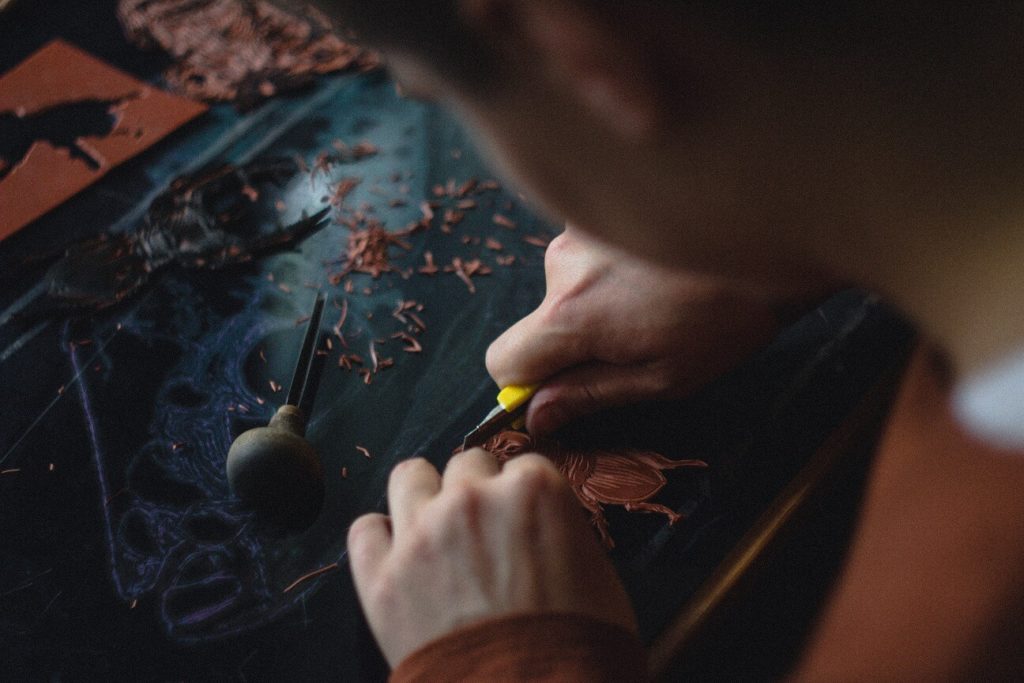by Rebecca Sciullo | Apr 19, 2017 | Productivity, Time Management, Uncategorized
Do you take breaks during your work day? It’s proven that sitting is not good for our health. As an artist, you might work on your feet, which is a good start in not being sedentary all day…but even if you’re standing, it’s good to take mental breaks during your day.
I work at a desk, so I’ve made a practice of working for 25 minutes, and then taking a 5 to 10 minute break where I get up and move around. I decided to use this formula after reading the Pomodoro Technique Illustrated. Twenty five minutes seemed like a short amount of time at first, but I quickly realized that with some simple pre-planning, it was just enough time to help me to stay focused and get things done. In order to make the 25 minute blocks work for me, there is some simple pre-planning involved. I know exactly how many 25 blocks I will work in a given day and what I will be doing during those blocs. Otherwise, I would spend 5 of the 20 minutes figuring out what to do next. I ask my new best friend Alexa to remind me when 25 minutes are up so that I know to take my break.
What do I do during those 10 minute breaks? It varies. Since I work at home, I often use that time to do some light housework, throw a load of laundry in, fold some clothes or other chore. I’m always amazed at how much I can get done in those breaks. I also use some of the breaks to take time for calm meditation. If I have quick phone calls to return, I might do that while walking around the house to get on my feet.
During those 25 minute blocks, the key is that nothing gets me up from my desk. I save anything that I might want to do – like get a cup of coffee – for break time.
This system has worked so much better for me than my old habit of just sitting at my desk for hours and hours. I find that I’m much more productive and feel better at the end of the day.
If you’re not taking breaks during your work day, try to incorporate a system that works for you.
Do you have a system for taking breaks that works for you? Share it here in the comments below.
Would you like more tips and ideas for your art business? Please sign up for my free e-newsletter here.
by Rebecca Sciullo | Sep 14, 2016 | Planning, Productivity, Time Management, Uncategorized
 The most important part of your visual art business, creating, can easily fall off your to do list when you’re faced with other pressing tasks in your business and life. Yet, making art regularly is the lifeblood of your business. While I’m not a visual artist, I am trying to set aside consistent time for writing. Maybe you can try these nine ways I use to protect my daily writing time.
The most important part of your visual art business, creating, can easily fall off your to do list when you’re faced with other pressing tasks in your business and life. Yet, making art regularly is the lifeblood of your business. While I’m not a visual artist, I am trying to set aside consistent time for writing. Maybe you can try these nine ways I use to protect my daily writing time.
1. Put it first
While it seems counter-intuitive, try creating before doing anything else in the day. I have a set time goal for myself and get busy as soon as I’m ready to work. You can do the same devoting your time to your creative work. The accomplishment of making progress on your art will boost your confidence for the rest of the day.
2. Schedule it as an appointment
Block out the time on your calendar. Treat the time as the same as any important commitment.
3. Say no to myself.
If I am so busy that I can’t find twenty minutes at the start of each day to write, I know there is too much on my plate and something has to give. This is a life issue, not a creativity issue. If you’re have the same struggle, stop taking on too much and get smarter about delegating what is already on your plate.
4. Say no to other people
While in the studio, close the door, turn off your phone, and stay away from email. What happens when you need to do something during the time you’ve pre-blocked for your creative work? Don’t cancel it, but reschedule it for later in the day.
5. Change the environment. Make your work space a place that you want to retreat to. This can be done with lighting, music, or a great cup of coffee. Take some time to figure out what is going to motivate you to get into that space.
6. Control your environment
Stay off your computer and put your phone on forward. I turn my phone ringer down and only answer if it is school calling. You can do the same. If you must be available to a sitter, school, or family member..have a hard and fast rule that you only answer for that one specific number.
7. Record other ideas to maintain focus.
Keep a notebook handy to write down unrelated thoughts and to-dos that pop into your head. This puts your mind at east knowing you won’t forget that thought later.
8. Stick with it
Try the Pomodoro Technique which keeps you focused or a 25 minute block of time. Set a timer and force yourself to sit through periods of creative block, discomfort, or even boredom.
9. Match the task to the time
I am at my best first thing in the morning. I have a lot of mental energy at this time. This is when I try to schedule my writing time. Later in the day, my mind is more easily distracted and my mental energy fades. More mundane business and personal tasks are taken care of in the middle of the day. Figure out when you are most creative and structure your studio time around this peak.
Do you have a trick or technique that has helped you to stay in the studio on a regular basis? I’d love to hear your ideas below.


